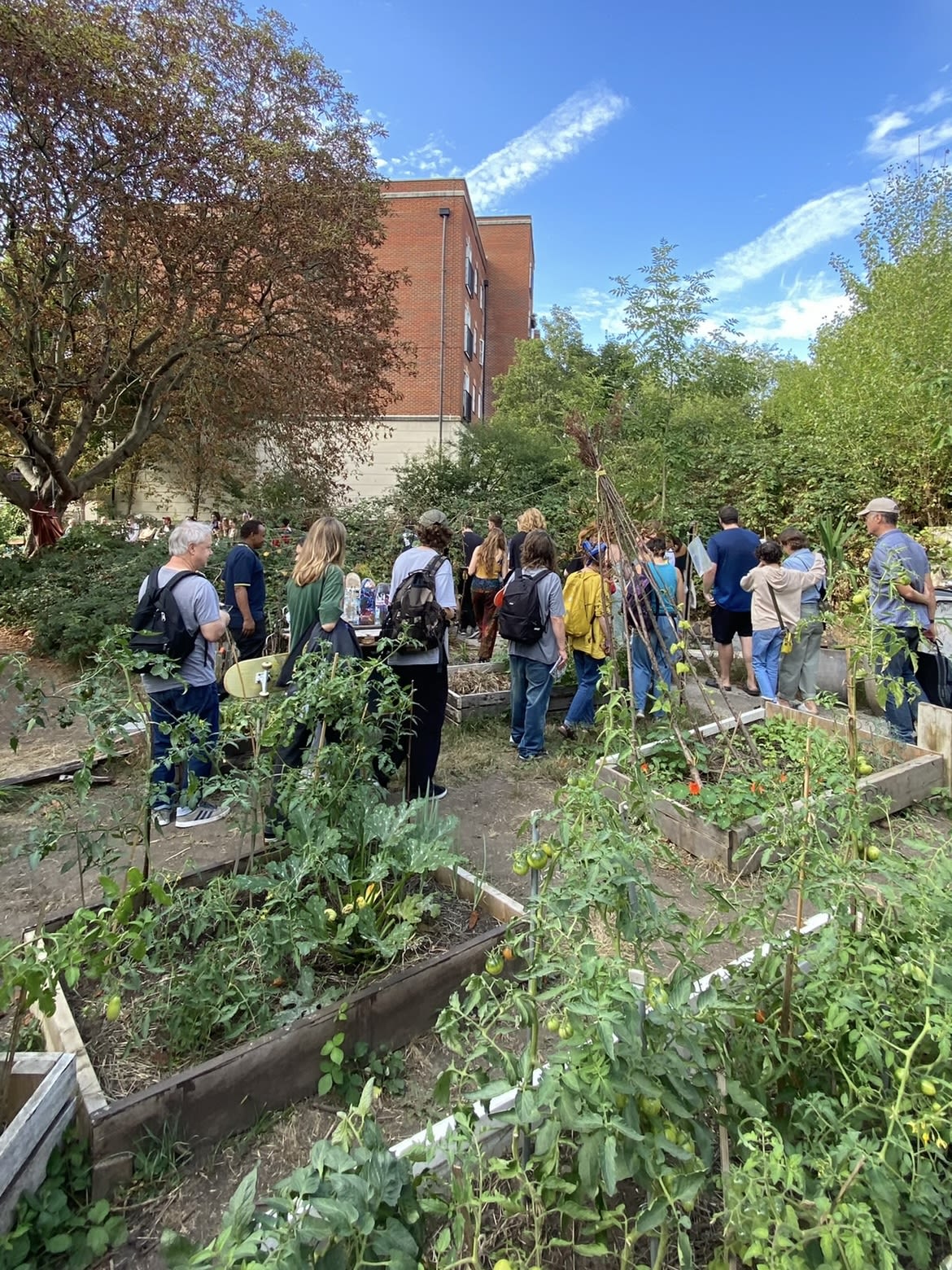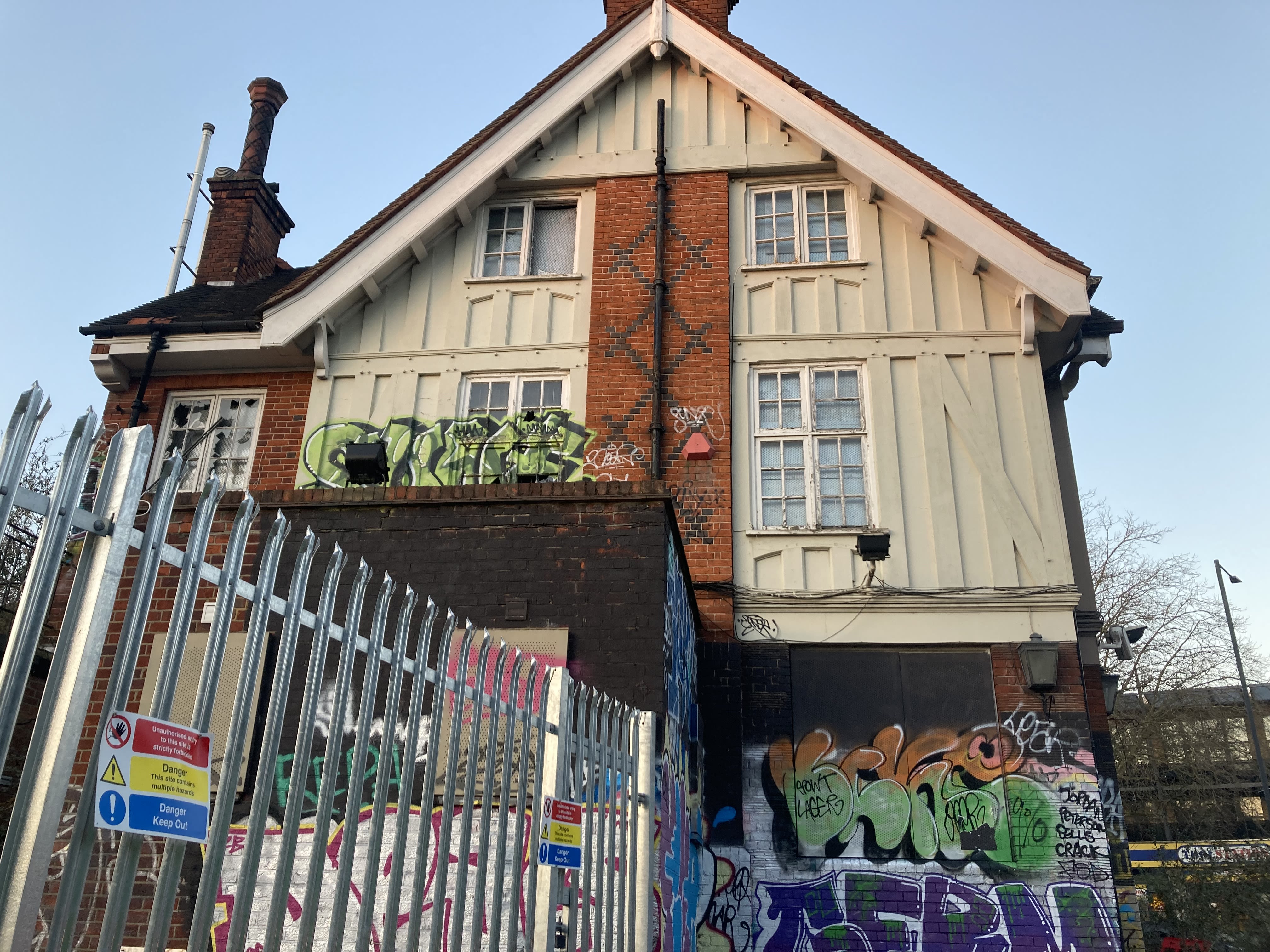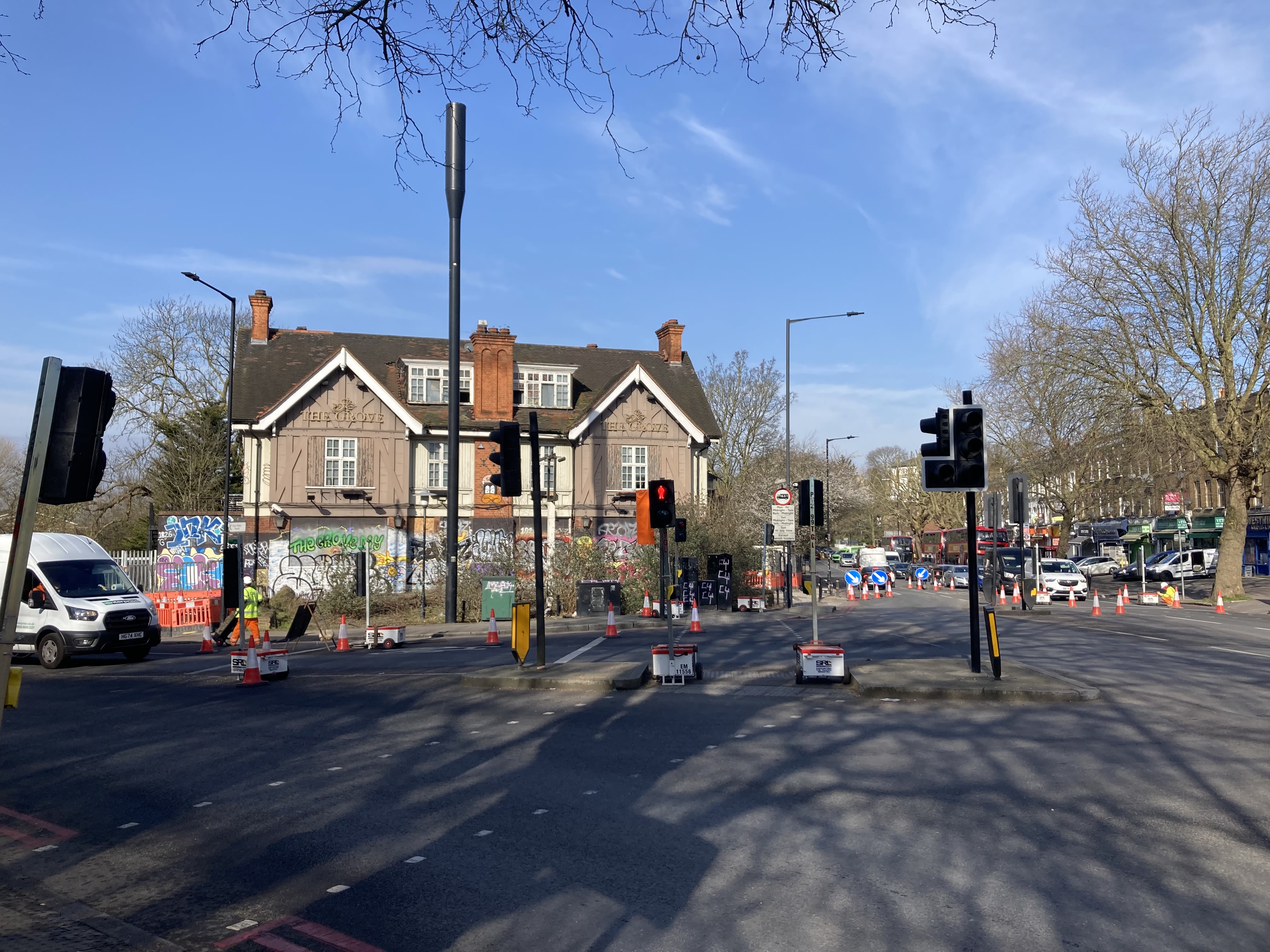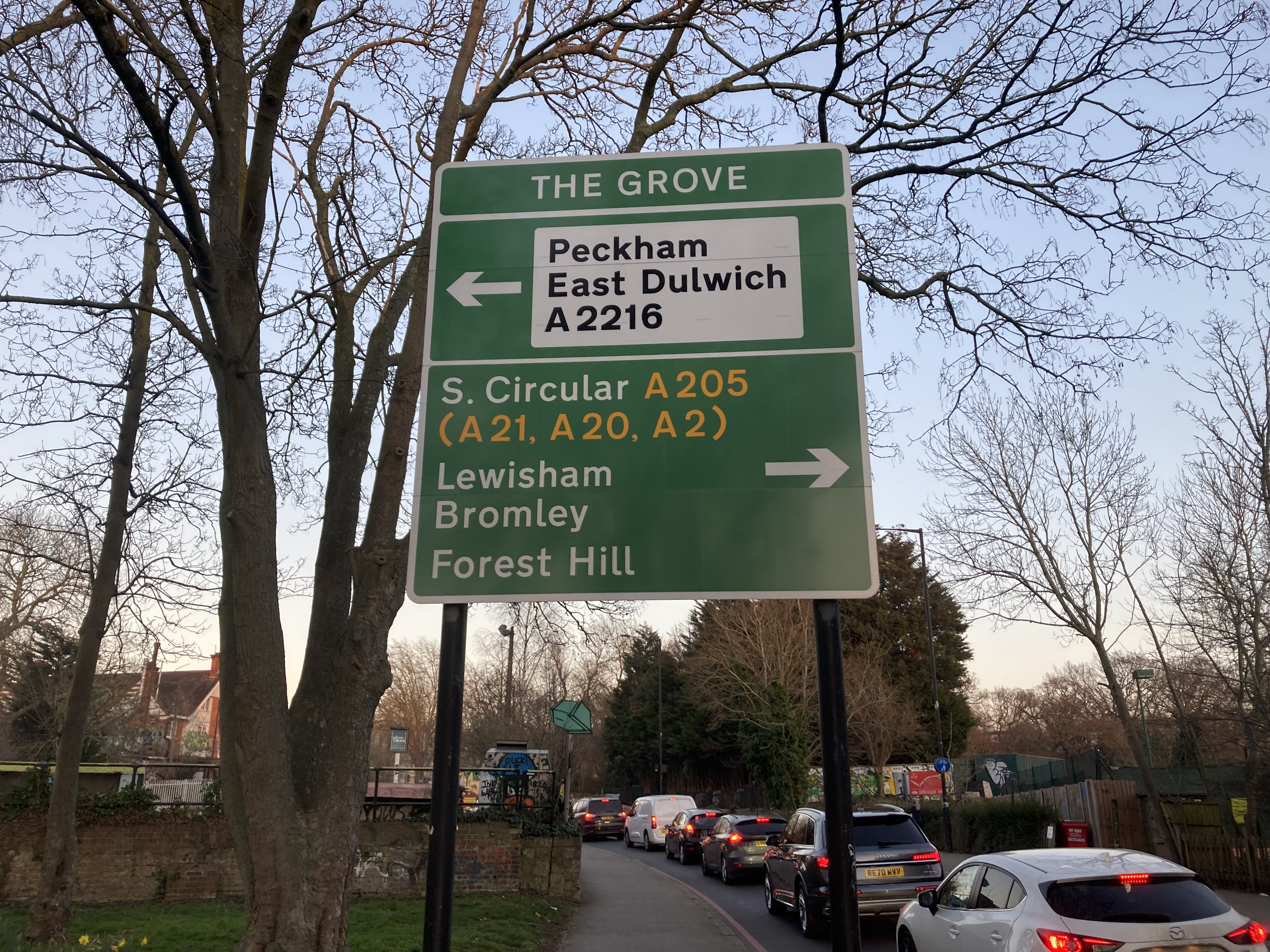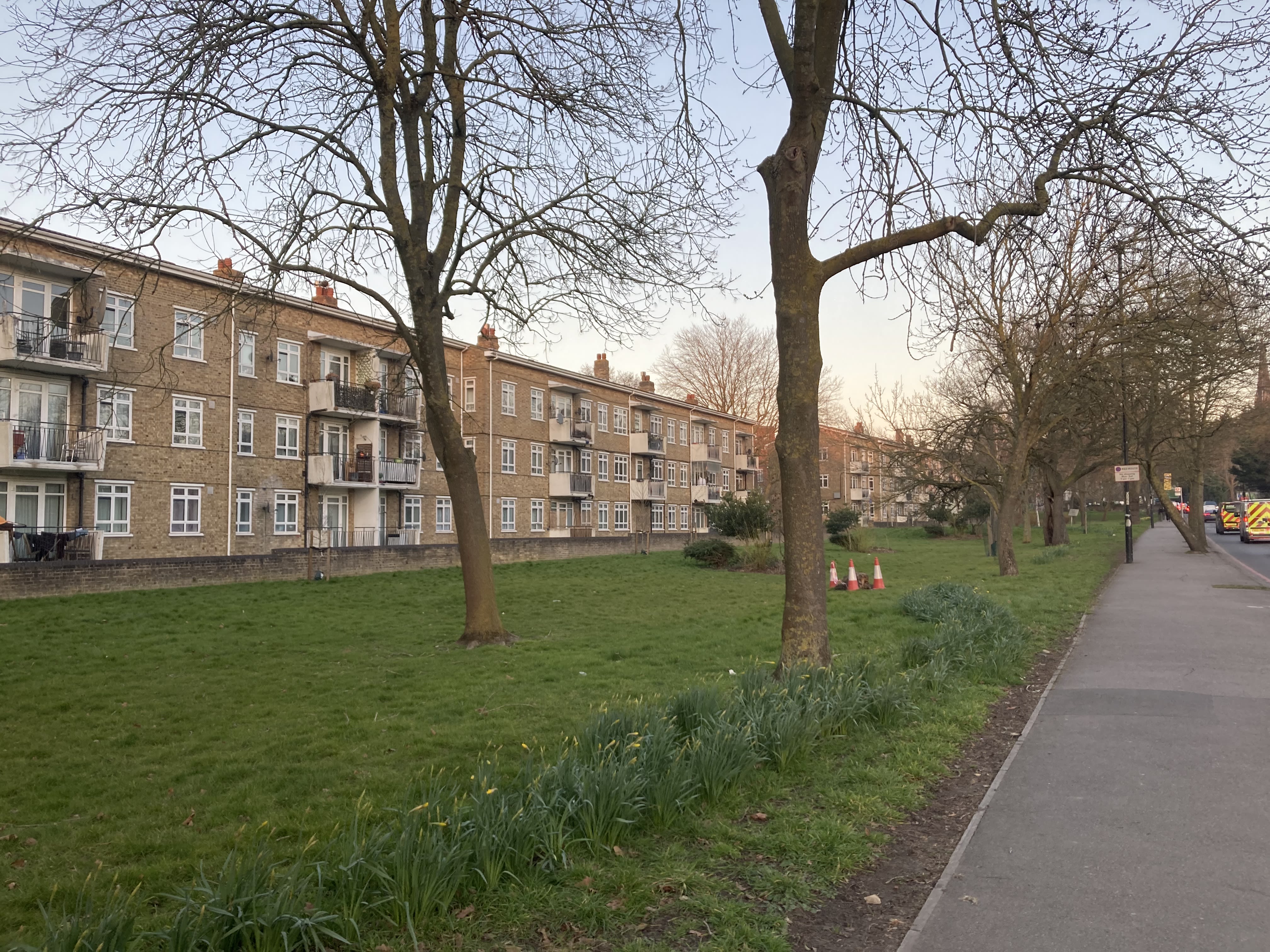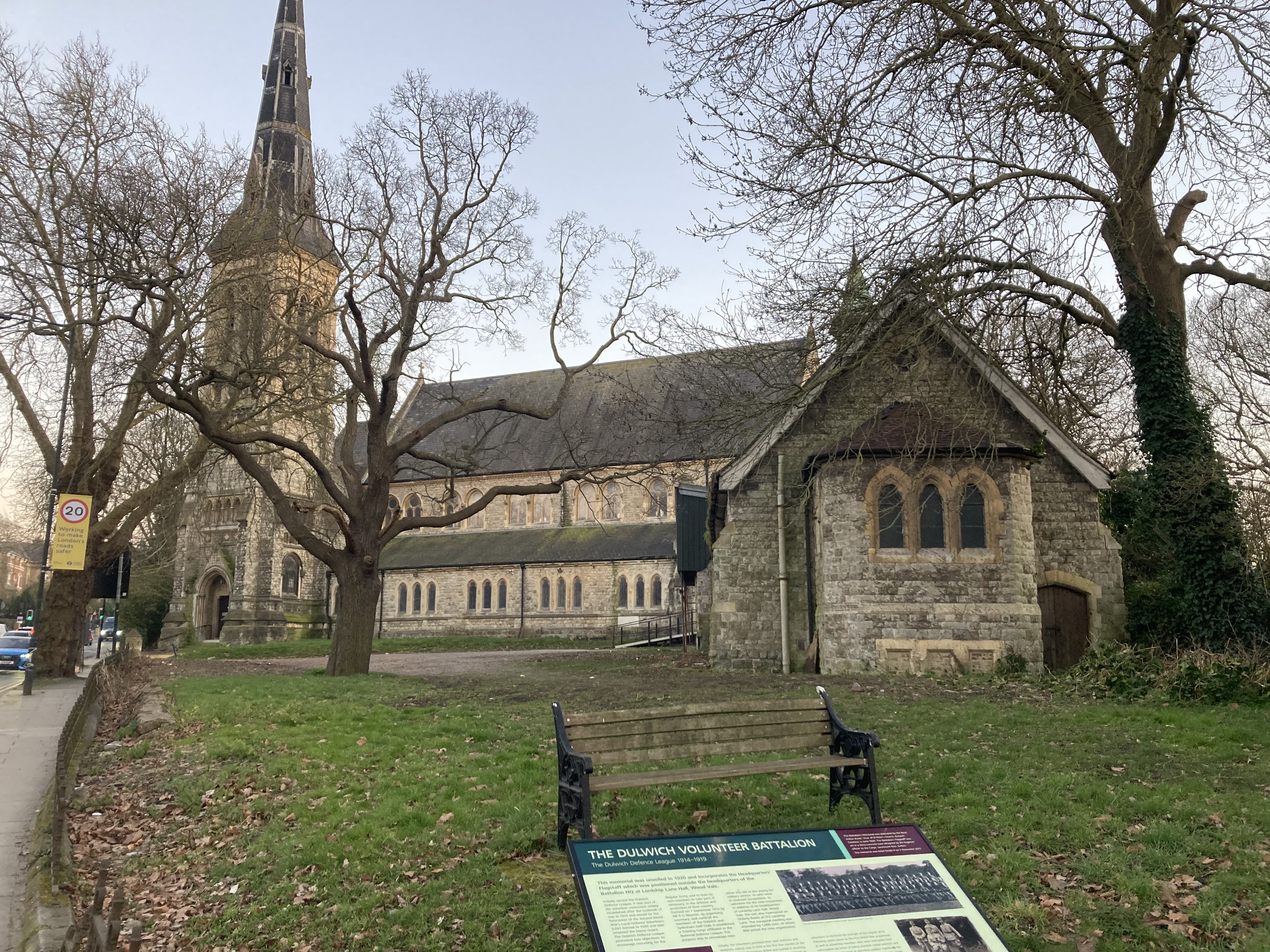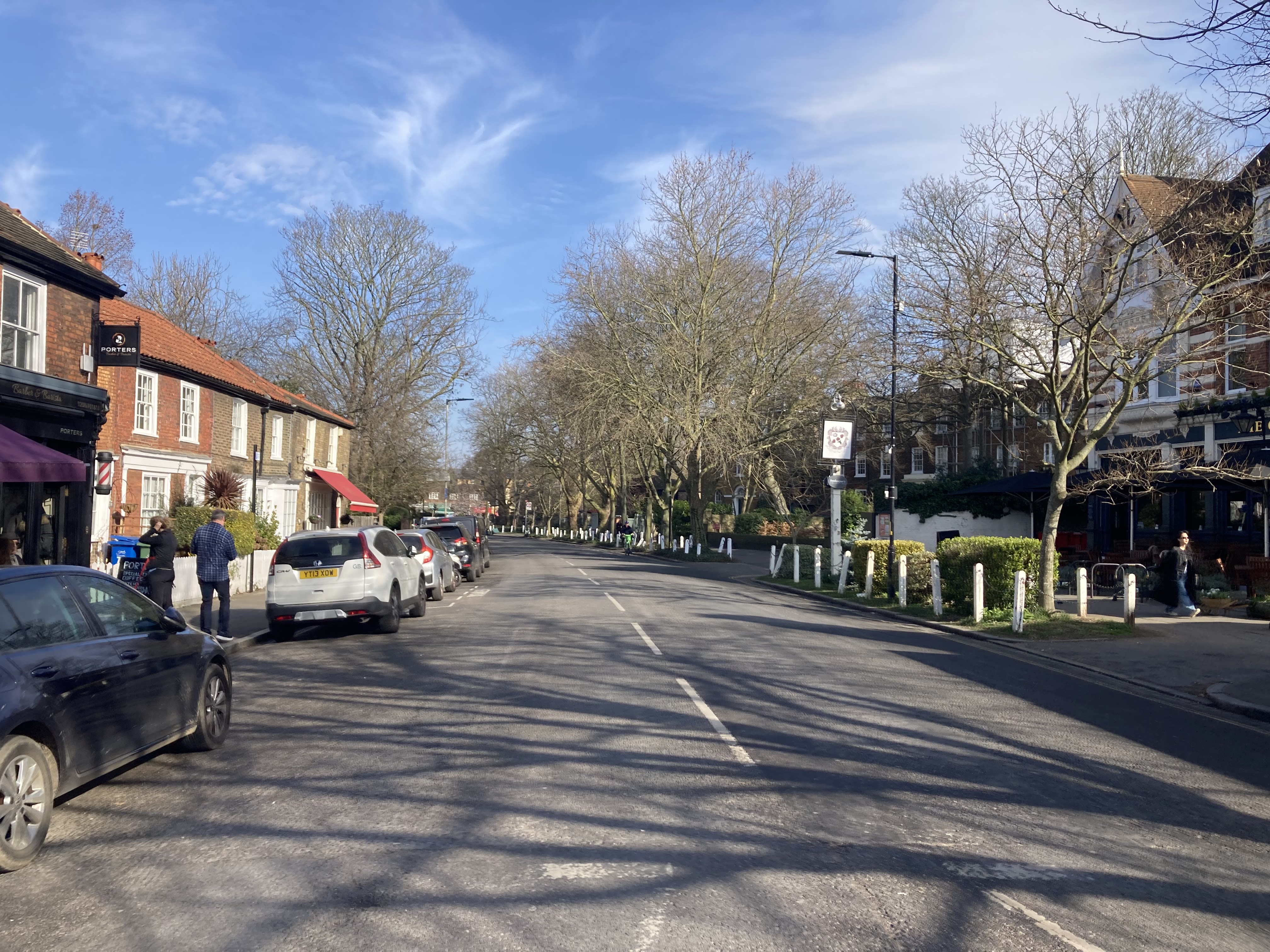Dulwich's Grove Tavern
What’s Next for the Abandoned Pub After a Decade of Neglect?
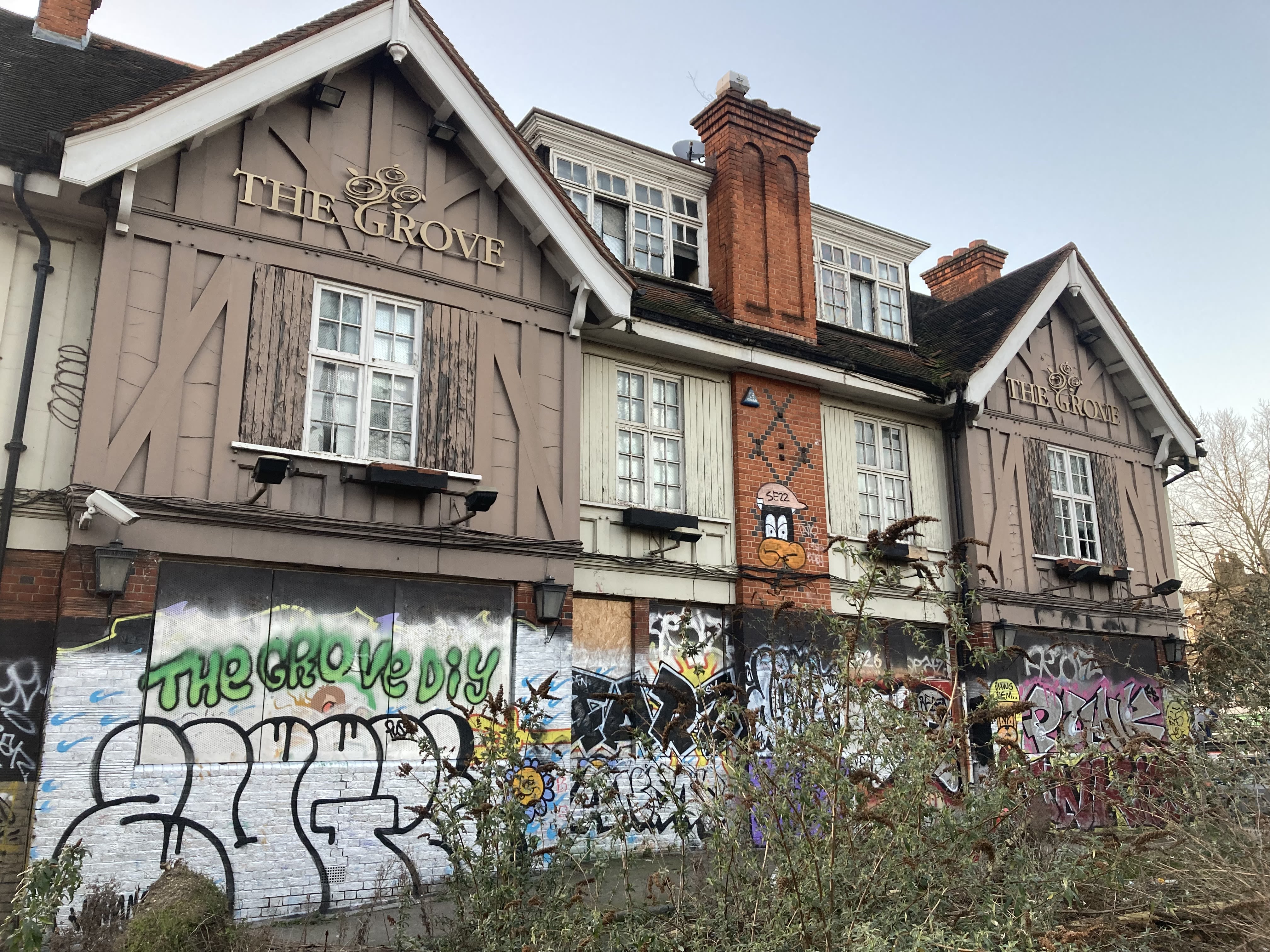
10 March 2025
The abandoned Grove Tavern in Dulwich has turned into a derelict relic, its fate uncertain following a fire in the kitchen that ravaged the building in 2012. The current owners, Stonegate Group (Stonegate), closed the pub and have not repaired the building since, leaving it to deteriorate over the last decade.
However, with the lease soon to be returned to Dulwich Estate (the Estate), the pressing question remains: What does the future hold for this forlorn site?
The building now bears the scars of its neglect - its walls plastered with graffiti, broken windows boarded up, and the surrounding area covered by overgrown weeds. Interestingly, the car park was repurposed into a skate park, by the Grove DIY, in 2020 and has become a popular hangout spot for local youths.
The Grove skate park
The Grove skate park
Another silver lining for the forgotten space is the Grove Community Garden, tucked away behind the building. Set up in 2021, they endeavoured to clean up and revive the garden, which they reported "had been used for fly tipping and heavy drug abuse." Today, it is home to vegetables, flowers and community events.
The Grove Tavern Community Garden. Credit: Grove Community Garden
The Grove Tavern Community Garden. Credit: Grove Community Garden
The left side of the Grove Tavern building
The left side of the Grove Tavern building
Grove Tavern at South Circular Junction
Grove Tavern at South Circular Junction
Location, location, location
On the corner of a South Circular junction at the top of Lordship Lane, the Grove Tavern sits in Dulwich Wood’s conservation area directly opposite St Peter's Church and just a stone’s throw away from the picturesque and well-kept leafy Dulwich Village.
South Circular Junction sign
South Circular Junction sign
Lordship Lane Estate, 0.2 miles from the Grove Tavern
Lordship Lane Estate, 0.2 miles from the Grove Tavern
Church of St Peter, Grade II listed
Church of St Peter, Grade II listed
Dulwich Village
Dulwich Village
"The Grove Tavern is a major entrance to Dulwich Village, but it looks rubbish. It's a terrible invitation. Given the extent of the damage, I suspect the building might have to be torn down before it can be rebuilt."
Ian McInnes, historian and ex-chairman of The Dulwich Society
From 1690 to Now: The history of the Grove Tavern
The site’s history spans over 100 years, since its first mention in 1690, playing a significant role in shaping Dulwich as we know it now.

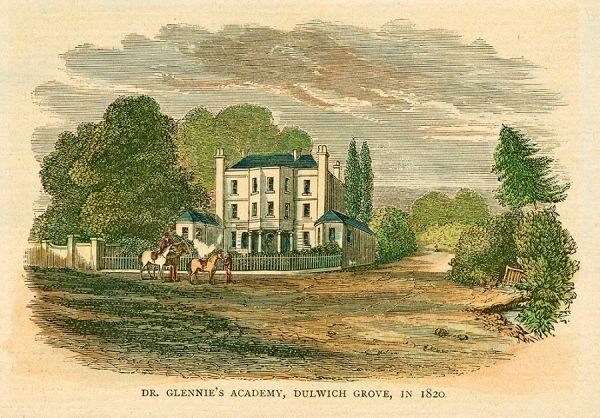

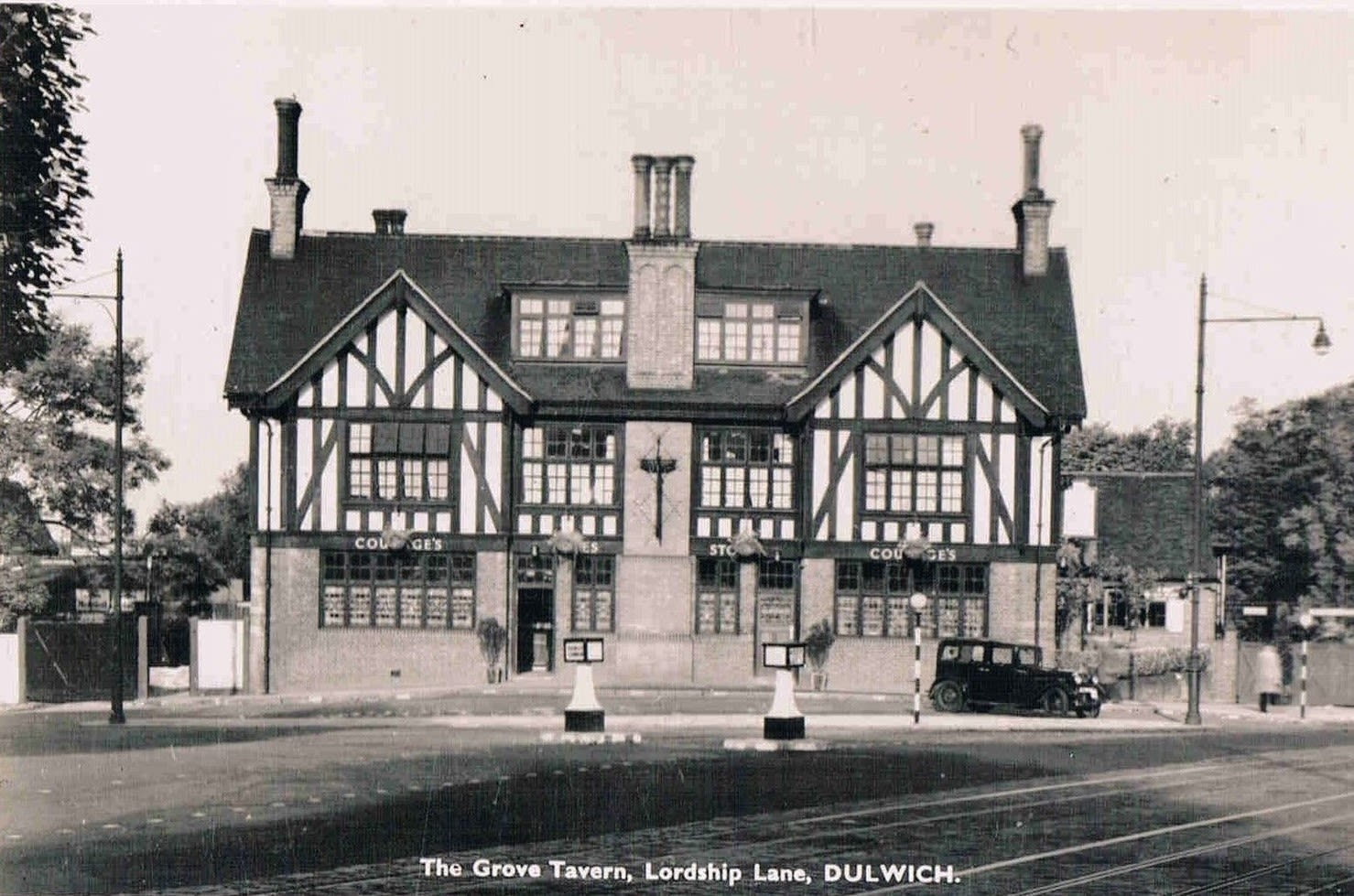
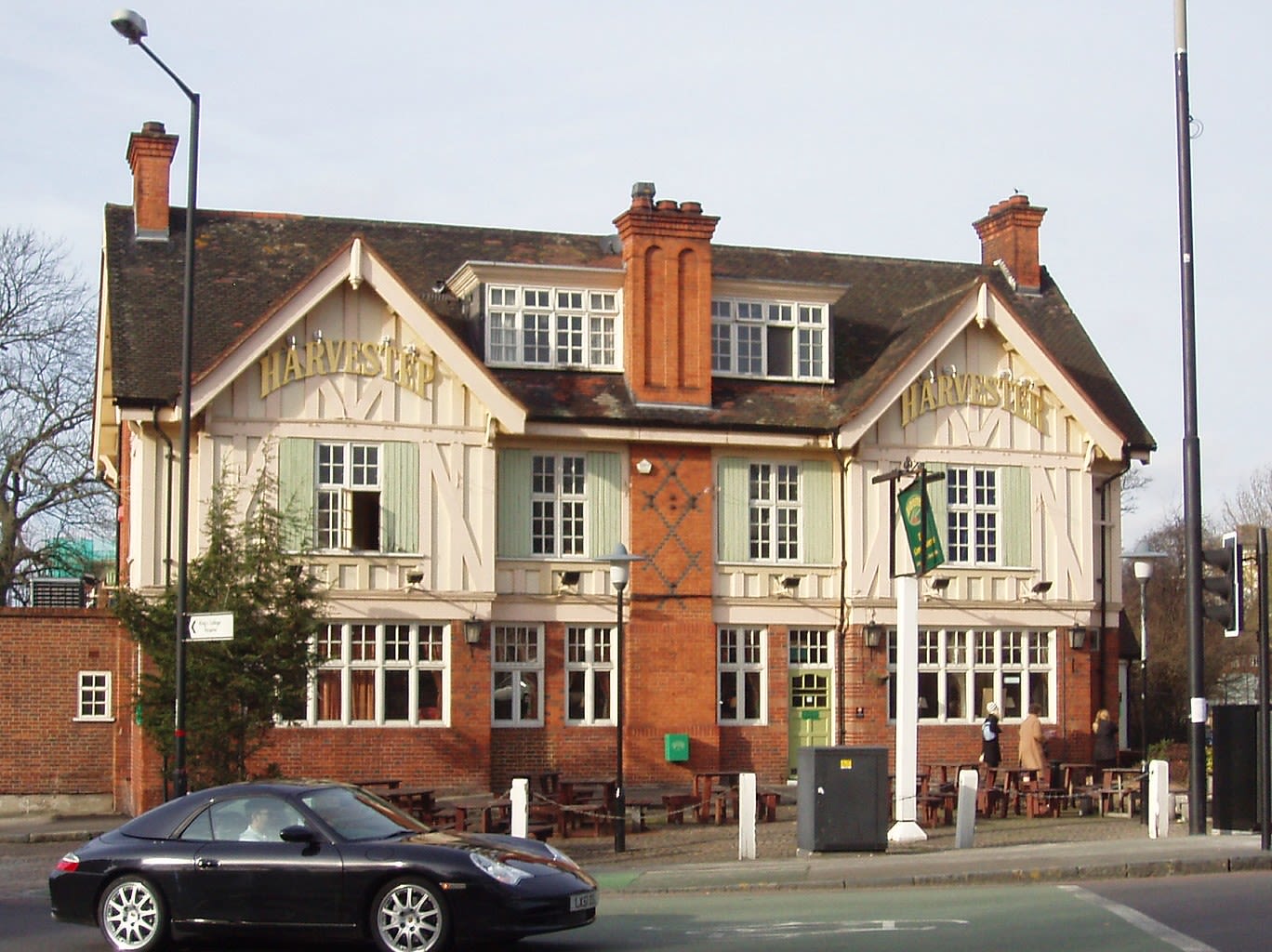
1700s
In 1704, John Cox was the first to own the lease of what was then called the Green Man Tavern. He created a path, that still exists today, known as Cox's Walk, to attract customers to the pub. In 1741, Cox's son, William, discovered the Dulwich Waters, believed to have curative powers, further boosting the pub's appeal.
In 1754, the Estate granted 8 acres of land along with various buildings to the Green Man Tavern. By 1774, the pub was renamed Dulwich Grove, and in 1798, it became Dr Glennie’s Academy, where Lord Byron was a pupil.
1800s
In the 1820s, the building was abandoned and eventually demolished by the Estate in the 1830s. Anticipation for Lordship Lane Station in the 1860s led to the construction of the Grove Hotel, which became a hub for banquets, sports matches, and summer parties, including music hall icon Dan Leno's cricket games attracting 4,000 fans.
1900s
In the 1920s, Messrs Courage & Co. demolished the original building, and architect Mr. Kirby designed the Grove Tavern with outdoor seating. The pub reached its peak by the 1960s, when it became a hotspot amongst Hollywood A-listers Richard Burton and Elizabeth Taylor. It won second place in the Pub of the Year contest in 1972.
2000s
It became a relatively popular Harvester before Stonegate took ownership in 2011. Their brief stint running it as a pub struggled to thrive. It is speculated that this may be one possible explanation as to why Stonegate were reluctant to restore it.
This timeline was informed by Ian McInnes' talk for Bell House and articles stored in the British Newspaper Archives.
The site’s story of constant reinvention is no small feat. Perhaps its legacy lies in being transformed once more into a building that meets the evolving needs of its community.
What plans are on the horizon?
Yet again, the property’s future rests in the Estate's hands, with Stonegate’s lease set to expire in September 2025.
A spokesperson from Stonegate said: “We will maintain security of the site up until this date. Any works required on site will be mutually agreed between Stonegate Group and Dulwich Estates.”
The Dulwich Estate, a registered charity established by Edward Alleyn in 1619, owns a significant portion of Dulwich. Managed by a board of trustees, the Estate takes great pride in its commitment to preserving the "special character of this unique area” amongst other responsibilities cited on its webpage.
Last week, the Estate shared that they are looking forward to regaining direct control of the site and managing it in keeping with the rest of the Estate.
They confirmed that the Grove Tavern is within a designated redevelopment site and is required to retain the pub as part of any new development, as imposed by Southwark Council’s current Local Plan.
"We will start looking for a pub operator shortly.”
A promising sign for those who have longed to see the Tavern restored its former glory.
Community Calls for Action
Southwark Council councillor for Dulwich Wood, Andy Simmons, has been at the forefront of lobbying efforts for the revitalisation of the Grove Tavern.
In a statement, he said: “We have been working with our local MP, Helen Hayes, for many years now to lobby Stonegate to hand back the lease so that the site can be brought back into use.”
Grove Tavern has not seen the inside of a pint glass or heard the cheer of punters for 13 years and yet, Stonegate did not return the lease, though they continued to pay rent to the Estate.
Simmons signalled that Dulwich Wood’s occupants are keen for the site to be turned into an affordable pub or restaurant, although the closure of the Capitol by Wetherspoons in nearby Forest Hill indicates some challenges in running an affordable pub in the area.
In November 2017, a public meeting organised by local group, the Dulwich Society, about the outcome of the site attracted 40 of its 1,400 members and visitors from The Campaign for Real Ale (CAMRA). The majority voted for a pub as their preferred outcome for the site.
Despite the Estate’s ownership of the site being imminent, Ian McInnes noted that the Estate had not proactively engaged or liaised with the local community to find out what they need or want from the property. He spoke for the Dulwich Society when he aired his disappointment that the Estate had not done enough, as the freeholders, to stop its decline altogether.
I took to the streets of Dulwich to hear from long-time residents, to find out what they really think about the Grove Tavern and their hopes for its future.
A pub or social housing, 'that is the question'
Andrew Marshall, pub owner of Lordship Pub down the road, explained the likely challenges of opening a pub, highlighting the site’s location as the main obstacle to its potential success.
"It's in a veritable no-man’s land— with barely any foot traffic, no residential on its doorstep, and it isn't on a bustling high street. Plus, it's a huge plot which would require an exorbitant investment. With so few potential customers, turning it into a pub would be a costly and daunting job."
If an affordable pub or restaurant isn't feasible, Simmons said: “Affordable social housing or homes for older people would be alternatives that local people have supported.”
"The council’s aim is to build more houses, so it’s a no-brainer—we need more housing, and Dulwich is full of grossly overpriced homes. Let’s have some more affordable or rental properties instead.”
While there isn't an obvious consensus on whether the Grove Tavern should be turned into a pub, community centre or social housing, one thing is clear. The people of Dulwich are frustrated with its current condition and want it to be opened to serve a function that benefits the community.
With patience wearing thin, the main fear is that it remains an “eyesore.” Ian McInnes worries that logistical complications regarding dilapidations may arise and cause a stalemate, delaying the progress of its redevelopment.
Only time will tell if the new ownership of the building marks a turning point in the site’s rich history, as Dulwich residents hope, or if it will remain in disrepair, a symbol of neglect, doing little to serve the community’s needs.


